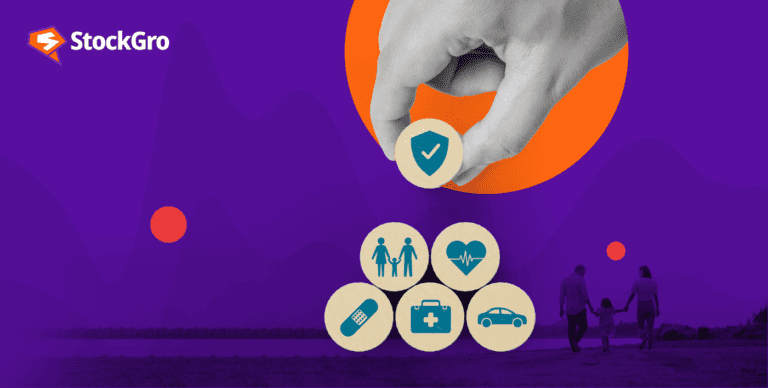
The replacement of Value Added Tax (VAT) by GST (Goods and Service Tax) in 2017 has been a game-changer for the Indian economy. It is applicable across multiple goods and services at different rates that are eventually passed on to the end consumer.
This article deals with GST rates on gold and how GST has impacted gold prices. So, if you intend to purchase gold anytime soon, you must know the impact of GST on gold in India.
What is GST?
GST stands for Goods and Services Tax.
It is an indirect tax that has replaced all other indirect taxes in India. It is a tax levied on all goods and services at the time of sale to the end consumer.
The government introduced it on July 01, 2017, to bring uniformity across all indirect taxes.
The GST percentages are 0%, 5%, 12%, 18% and 22%, based on which goods and services are classified. However, some products are exceptions to this, and gold is one among them.
You may also like: Understanding GST: The tax superhero of India
GST on gold
Gold is a precious metal that is an exception to the general rates. Gold classifies as goods under the GST Act, and making charges is considered a service under the GST Act. Hence, the physical product, as well as making charges, are subject to GST.
However, selling existing gold to purchase new gold is not liable for taxes under the GST Act.
Gold is covered under Section 8 of the GST Act, which deals with composite and mixed supplies. Composite supplies are those with two or more goods or services or a combination of the two.
Gold and making (manufacturing) charges are subject to 3% and 5%, respectively. Of the 3%, 1.5% belongs to CGST (Central Goods and Service Tax) and 1.5% to SGCT (State Goods and Service Tax).
| Tax | Pre-GST rates | Post-GST rates |
| Value added tax | 1.2% | 0 |
| Sales tax | 1% | 0 |
| Service tax | 1% | 0 |
| Import duty (Including agriculture and infrastructure development cess) | 15% | 15% |
| Tax on making charges | 0 | 5% |
| Gold (Finished product) | 0 | 3% |
Example of GST calculation
Consider the below example based on gold price in India as of 27 Nov 2023:
24 carat gold price for 10 gms of gold: ₹62,500
| Particulars | Pre-GST calculation | Post-GST calculation |
| Price of basic gold (10gms) | 62,500 | 62,500 |
| Import duty at 15% | 9,375 | 9,375 |
| Service tax on total (A+B) at 1% | 718.75 | 0 |
| VAT on total (A+B+C) at 1.2% | 871.12 | 0 |
| GST on total (A+B+C+D) at 3% | 0 | 2,156.25 |
| The total value of raw gold | 73,464.87 | 74,031.25 |
| Making charges at ₹500 per gram | 5,000 | 5,000 |
| GST on making charges at 5% | 0 | 250 |
| Final value of gold jewellery | ₹78,464.87 | ₹79,281.25 |
The above calculation shows the price of gold jewellery without considering it as a composite supply, i.e., by charging GST on gold separately and jewellery-making charges.
An alternate approach is to consider the jewellery as a composite supply and charge GST at 3% on the final value instead of applying the GST on gold percentage of 3% on raw gold and 5% on making charges.
Considering the second approach, the overall GST on gold jewellery will be:
(62,500 + 9,375 + 5,000) * 3%
= ₹2,306.25
The final value of the jewellery will be:
76,875 + 2,306.25
= ₹79,181.25
Also Read: Gold vs Equities- Which is the right investment option?
Impact of GST on gold prices
The increasing cost of gold combined with high GST rates has negatively impacted the demand for gold in India. There has also been a significant dip in the value of imports from $46.2 billion in 2021-2022 to $35 billion in 2022-2023.
Despite the negative impact of rising prices causing a decrease in demand and liquidity, the introduction of GST on gold has brought positive changes, as well.
GST requires maintaining records of all transactions, which has increased transparency in gold dealings, reducing illegal activities.
GST exemptions on gold
- Interest paid on gold loans is not taxable under GST.
- Gold supplied to banks and exporters by specific agencies for the purpose of exports is exempt from GST. This aims to promote gold exports, thereby, helping India’s balance of payments.
Also read: What do the GST council’s decisions mean for your wallet?
Input tax credit
Input tax credit is a facility given to GST-registered traders to reduce their tax liabilities.
It is where GST registrants can offset GST payments against GST receipts and pay the balance to the government. This is applicable to gold trades too.
Gold dealers pay GST while buying their supplies from manufacturers, wholesalers and importers. They then collect taxes from end consumers upon selling gold. The input tax credit allows dealers to deduct GST paid from GST received and credit the balance to the government.
GST Rates on Gold in India: A Complete Guide
The Goods and Services Tax (GST) significantly impacts how gold is bought and sold in India. Whether you’re investing in jewelry, coins, or digital gold, understanding the GST implications helps you make better financial decisions and avoid hidden costs.
Let’s break down the applicable GST rates for different types of gold and investment formats.
GST Rate on 24 Carat Gold in India
24-carat gold, which is the purest form of gold (99.9% purity), attracts 3% GST in India. This is applicable when you purchase gold coins, bars, or digital gold. If you buy gold purely for investment and not in the form of jewellery, the GST is limited to this flat 3% rate.
GST Rate on 22 Carat Gold in India
22-carat gold, which is typically used in making jewellery, also attracts 3% GST on the value of the gold. However, if you’re buying jewellery, there’s an additional 5% GST on the making charges, making the effective GST slightly higher.
Example:
If you purchase ₹1 lakh worth of gold jewellery with ₹5,000 in making charges:
- 3% GST on gold = ₹3,000
- 5% GST on making charges = ₹250
- Total GST = ₹3,250
How GST Applies to Digital Gold Investments
Buying digital gold from platforms like Paytm, PhonePe, or brokerage apps also attracts 3% GST, just like physical gold. This tax is levied at the time of purchase and is reflected in your invoice. Since there are no making charges or physical delivery involved at purchase, the taxation is simpler.
Understanding GST on Gold Investment Schemes
Gold investment schemes offered by jewellers (like pay-monthly and get jewellery later) also come under GST rules. Typically:
- GST is levied only at the time of redemption, not on each installment.
- When you convert your deposits into jewellery, 3% GST on gold value + 5% on making charges applies.
- No GST is applicable on premature withdrawals, unless gold is purchased.
Conclusion
The goods and service tax is a replacement for all indirect taxes like VAT, service tax, excise duty, etc., that were levied on gold purchases. GST on gold is borne by the final consumer while purchasing.
High-quality gold imposes higher taxes and vice versa i.e., 24-carat gold GST rate will be higher than GST on 22-carat gold because the basic price of gold is more expensive for 24-carat than 22-carat. However, 24-carat gold is not appropriate for jewellery. Hence, consumers can save GST on making charges while investing in 24-carat gold. Since this is wholly borne by consumers, it is important for them to consider different factors such as the quality and hallmark, carat, price fluctuations, purpose of investment, etc.
FAQ’s
Only registered GST dealers or businesses can claim GST refunds — usually in case of exports, inverted duty structures, or excess input tax credit. For individual gold buyers, GST paid is a final cost and not refundable.
he GST rate on 22K gold is:
3% on the gold value
5% on the making charges (if buying jewellery)
To calculate 18% GST:
Multiply the base amount by 0.18
Example: ₹10,000 × 0.18 = ₹1,800 GST
This is useful if you’re calculating GST for gold-related services like locker rentals or secure vaulting.
Break it down like this:
Gold Value × 3% = GST on gold
Making Charges × 5% = GST on service
Add both GSTs to your final bill
This transparent breakdown helps avoid confusion at jewellery stores and lets you verify the billing.
Make data-driven decisions with in-depth technical stock market analysis app. Master market trends with StockGro app now!
